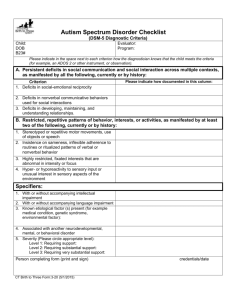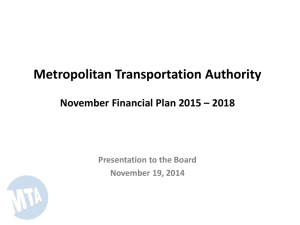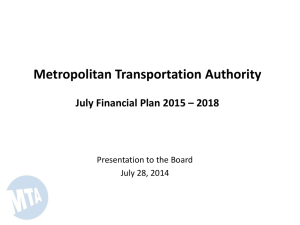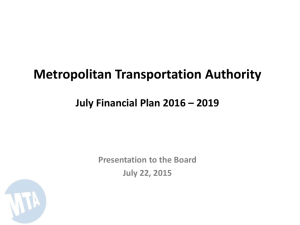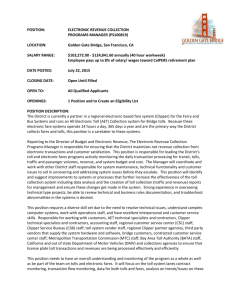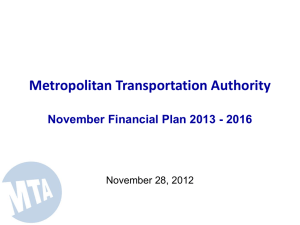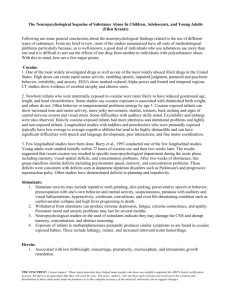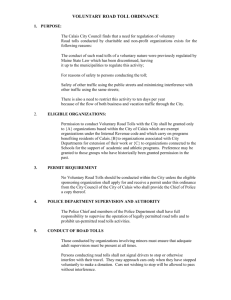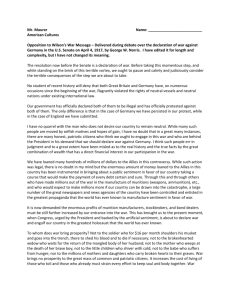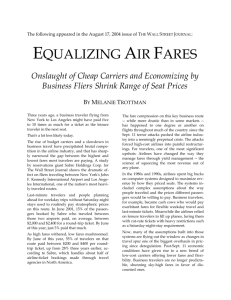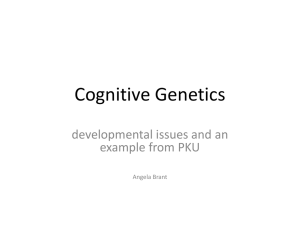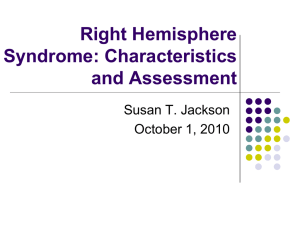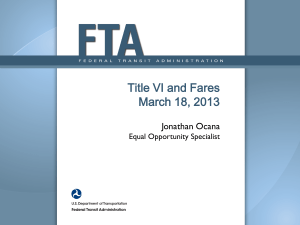Highlights of the July Plan
advertisement
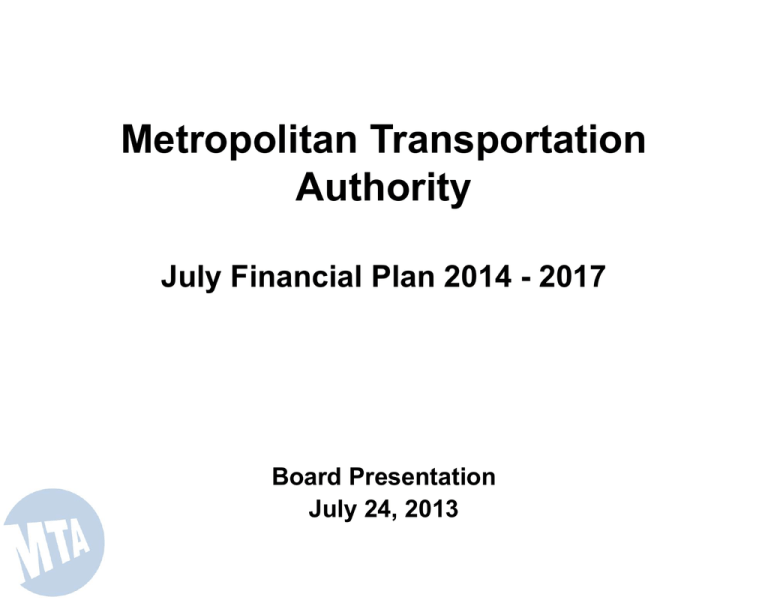
Metropolitan Transportation Authority July Financial Plan 2014 - 2017 Board Presentation July 24, 2013 Since July 2010, MTA’s Plans have been disciplined, consistent and totally transparent • This July Plan reflects the three key elements of prior Plans – Significant annually recurring cost reductions: $1.3 billion by 2017 • No budget-driven service reductions since 2010 cuts – Three years of “net zero” union wage growth • Already achieved four and a half years of real zero non-union wage growth – Biennial fare and toll increases as planned • Adds and/or restores service when sustainable • Preserves and enhances funding for the Capital Program • Increases emphasis on addressing long-term costs such as pension, retiree health care, paratransit, and debt service previously considered “uncontrollable” 2 “Uncontrollable” expenses are increasing faster than inflation and “controllable” spending 2013 to 2017 Mid-Year Forecast Compounded Annual Growth Rate (CAGR) 1 Personnel Service / Other Than Personnel Service. 3 Even assuming annually recurring cost savings, three “net zeros” and biennial fare and toll increases, the February Plan projected $325 million of deficits through 2016 ($ millions) 4 What has changed since the February Plan? Favorable re-estimates and other changes - Higher real estate-related subsidies (Urban Tax) - Higher toll revenue - Lower pension costs - Lower health & welfare costs - Lower energy costs - Additional paratransit savings* - Reduced debt service from refinancings*; and - Reduced 2012 spending* that increased the carry-over cash balance Unfavorable re-estimates and other changes - Lower PMT and PBT receipts - Lower fare revenue - Increased insurance costs (premiums impacted by Sandy) - Metro-North derailment costs - Operating cost “build up” associated with expansion projects Bottom line is net-favorable * Reflects management efforts 5 Determining the amount of Service Investments to include in the July Plan • New and restored service adds ongoing expense to the budget; funding must be sustainable • Amount should be evaluated in the context of the overall budget, not specific revenue or expense lines • Amount committed to additional service should be large enough to provide a meaningful improvement in our customers’ use of the System, but no so large that its sustainability is at risk. 6 Highlights of the July Plan • Funds $18 million of additional service investments and customer enhancements – In addition to $11.5 million of service adjustments, primarily driven by guidelines • $11 million in other customer service initiatives in 2014 • Invests $76 million in important new operational and maintenance needs • Includes $80 million annually of PAYGO capital beginning in 2015 in support of the 2015-2019 Capital Program – Funded primarily with debt service savings from the 2013 refunding and reestimates of interest rates and cash flows • Uses $80 million of non-recurring real estate receipts to reduce LIRR Additional Pension Plan’s $1.2 billion unfunded liability, saving $6 million annually • Increases OPEB contributions to continue to address $17.8 billion unfunded liability • Proposes use of unexpended year-end General Reserve balances to make one-time payments toward long-term obligations (unfunded pension or OPEB liabilities, PAYGO or debt retirement) to reduce annual expenses, minimizing pressure on fares and tolls. • Consistent with New York State budget projections 7 With these re-estimates and new initiatives, the July Plan projects out-year deficits of $240 million, lower than the February Plan ($ millions) * The February Plan only included projections through 2016; 2017 represents an extrapolation of the February Plan’s 2016 projection. 8 The key elements of prior Plans remain essential in addressing the July Plan deficits ($ millions) 9 The key elements of prior Plans remain essential in addressing the July Plan deficits ($ millions) • Savings initiatives close 58% of the cumulative deficit 10 The key elements of prior Plans remain essential in addressing the July Plan deficits ($ millions) • Savings initiatives close 58% of the cumulative deficit • Fares and tolls close 24% 11 The key elements of prior Plans remain essential in addressing the July Plan deficits ($ millions) • Savings initiatives close 58% of the cumulative deficit • Fares and tolls close 24% , and • “Net-zeros” from represented employees close only 15% 12 MTA is continuing to follow its Plan, but risks remain • Execution of Financial Plan – “Net-zero” labor settlements – Annually recurring cost savings – Fare and toll increases in 2015 and 2017 – Loss or reduction of PMT or other revenues without equivalent replacement revenues • Economic uncertainty – National economy remains weak – Local economy recovery is uneven • Federal support below expected levels – On-going capital support in light of sequestration pressures – Repair and resiliency funding • Longer-term vulnerabilities – – – – – – Increasing operating costs associated with expansion projects Funding for 2015-2019 Capital Program Casualty risks to the system; ability to fund mitigation investments Retiree healthcare costs Pensions Building and maintaining critical financial reserves 13
